Intimate conversation: the famous red telephone box copied from the tombstones
Categories: Culture | Design and Architecture | Europe
By Pictolic https://pictolic.com/article/intimate-conversation-the-famous-red-telephone-box-copied-from-the-tombstones.htmlAnyone familiar with the colorful London phone booth. They are the traditional symbols of the UK along with double-Decker buses and big Ben. But few know that these cute designs are built on the type of headstone on the grave.
Who and when came up with the idea to make a phone booth on the model of the cemetery monument, read on.
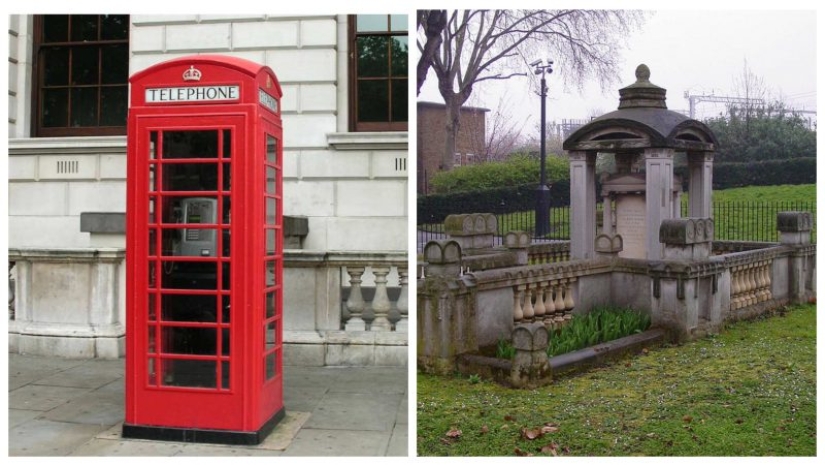 British post introduced the first public telephone kiosk K1 in 1921. It was rectangular, had a pyramidal roof topped with an iron spire. This design was not in the taste of refined British public. Citizens were outraged and filed a request to remove the unsightly telephone box from the streets. Therefore, the Royal arts Commission decided to announce a competition for new design of the kiosk.
British post introduced the first public telephone kiosk K1 in 1921. It was rectangular, had a pyramidal roof topped with an iron spire. This design was not in the taste of refined British public. Citizens were outraged and filed a request to remove the unsightly telephone box from the streets. Therefore, the Royal arts Commission decided to announce a competition for new design of the kiosk.
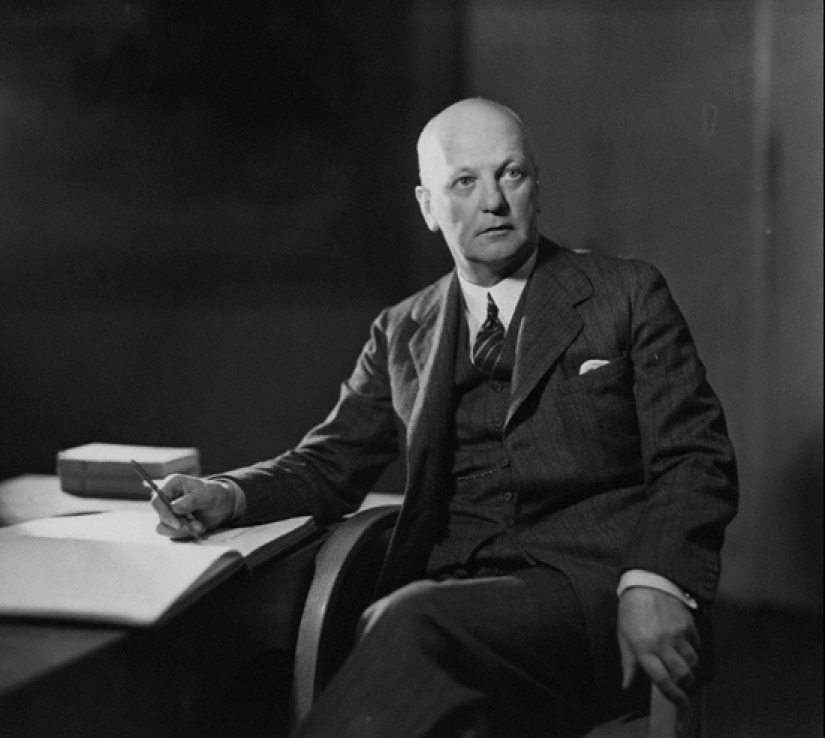 The Creator of the red telephone box, Giles Gilbert Scott
The Creator of the red telephone box, Giles Gilbert Scott
The competition was attended by three of the most famous British architect of the time: Robert Lorrimer (Robert Lorimer), John Burnet (John Burnet) and Giles Gilbert Scott (Giles Gilbert Scott). The idea of a red phone booth came to mind for Scott and his fame as the Creator of one of the symbols of Britain.
Scott designed the K2 rectangular box with a domed roof. Each side was decorated with panels around the outer edge, and the basis remained transparent. The design was crowned with a lighted image of the phone, and on the pediment the designer has placed the Tudor crown.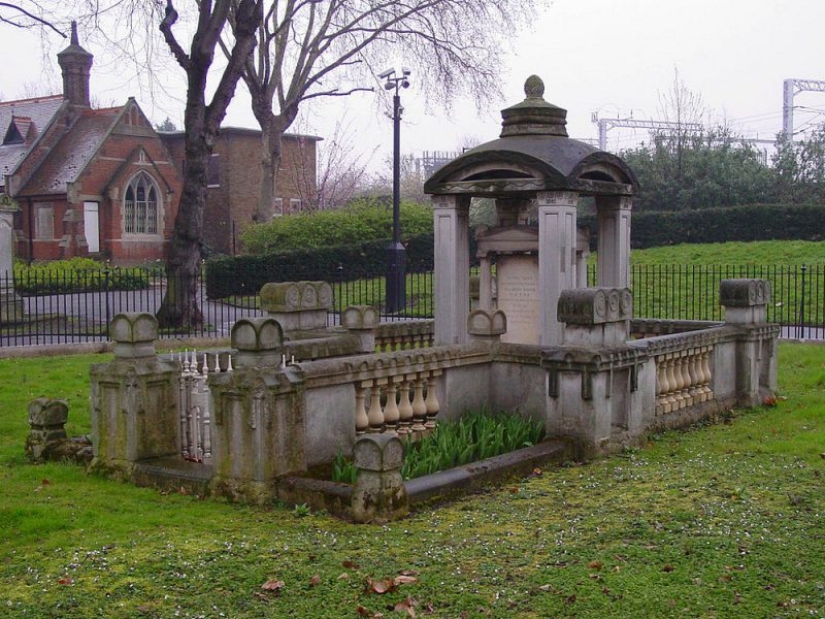 Grave of Eliza Sawn in the old cemetery at St Pancras
Grave of Eliza Sawn in the old cemetery at St Pancras
The most interesting point of this whole story — the origin of design ideas kiosk K2. The secret red phone booth is hidden deep underground, in the literal sense of the word. To create the famous design of Mr. Scott was inspired by grave of the Eliza Soane (Soane, Eliza), wife of sir John Soane, which rests in the old cemetery at St Pancras in London.
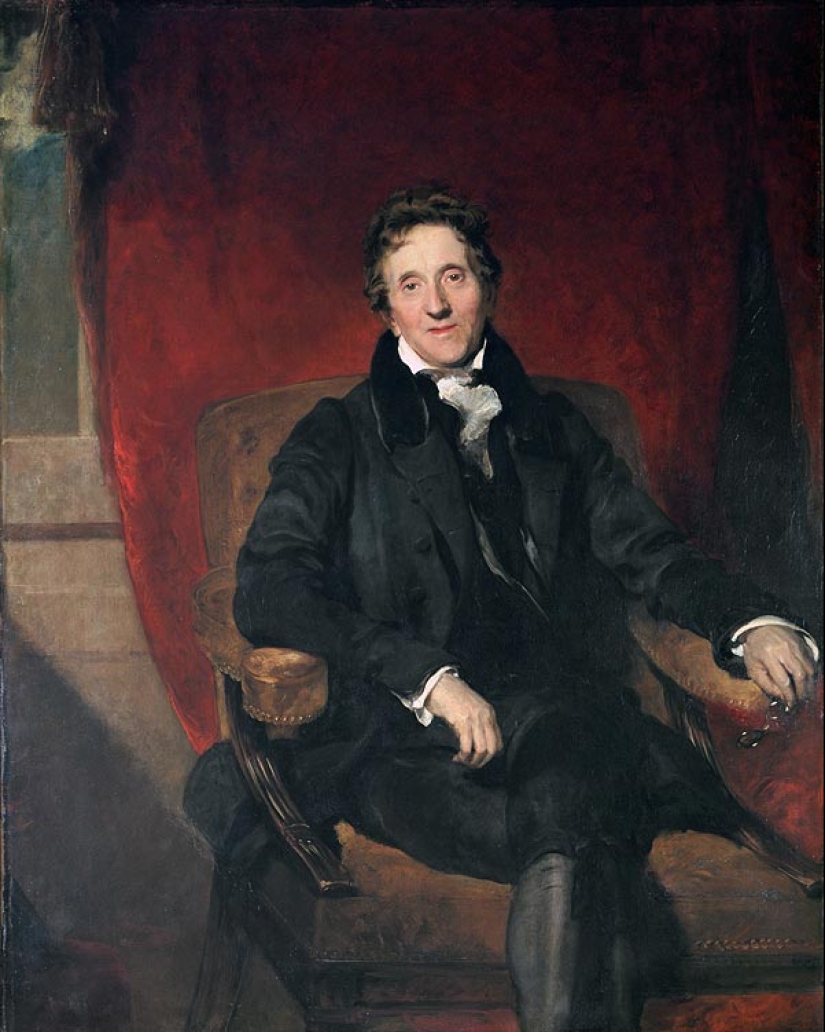 The architect sir John Soane
The architect sir John Soane
Sir John Soane was one of the most advanced architects of his time and designed many famous London buildings. His house-Museum and still opens doors for visitors.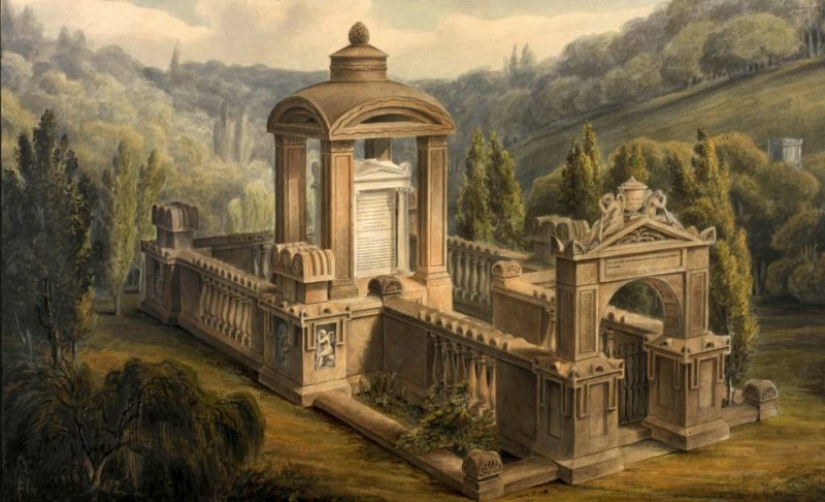 Figure artist George Basevi, which shows the grave of Eliza the Soun
Figure artist George Basevi, which shows the grave of Eliza the Soun
In 1815, when his wife Eliza died he built over her tomb luxurious tomb. The monument had a square shape, surmounted by a dome, and was ornamented, designed by sir Scott. On the roof of a widower placed a pine cone — a symbol of regeneration in ancient Egypt. The top of the gravestone was surrounded by a garland of Laurel leaves — the symbols of eternity.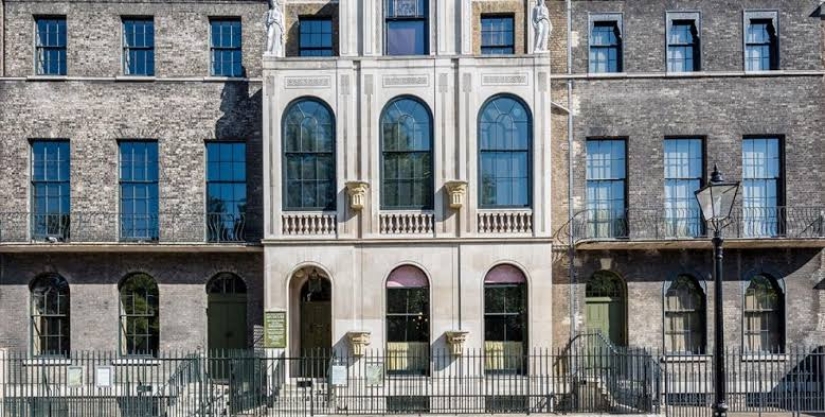 House-Museum of the architect John Soane
House-Museum of the architect John Soane
Mr. Giles Gilbert Scott, probably, knew that grave. Later he became the caretaker of the house-Museum of sir John Soane.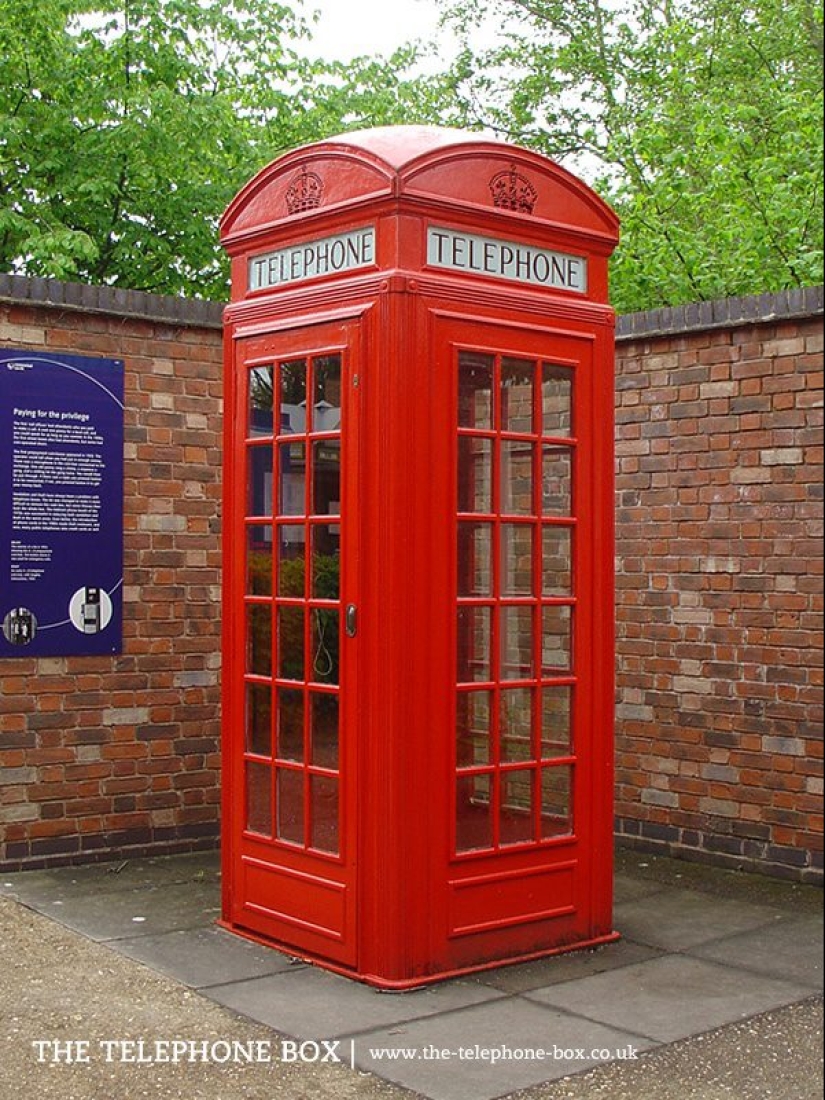 Telephone kiosk K2
Telephone kiosk K2
Phone booth sir Scott was recognised by the Royal mail is the best among all the samples. Originally she was painted with silver paint, and the inside was blue, but the mail decided to change the color to red. It was made 1,700 kiosks, which are installed across London. Five years later, in 1929, the mail, the government decided to change a phone booth because they were too bulky and expensive to manufacture.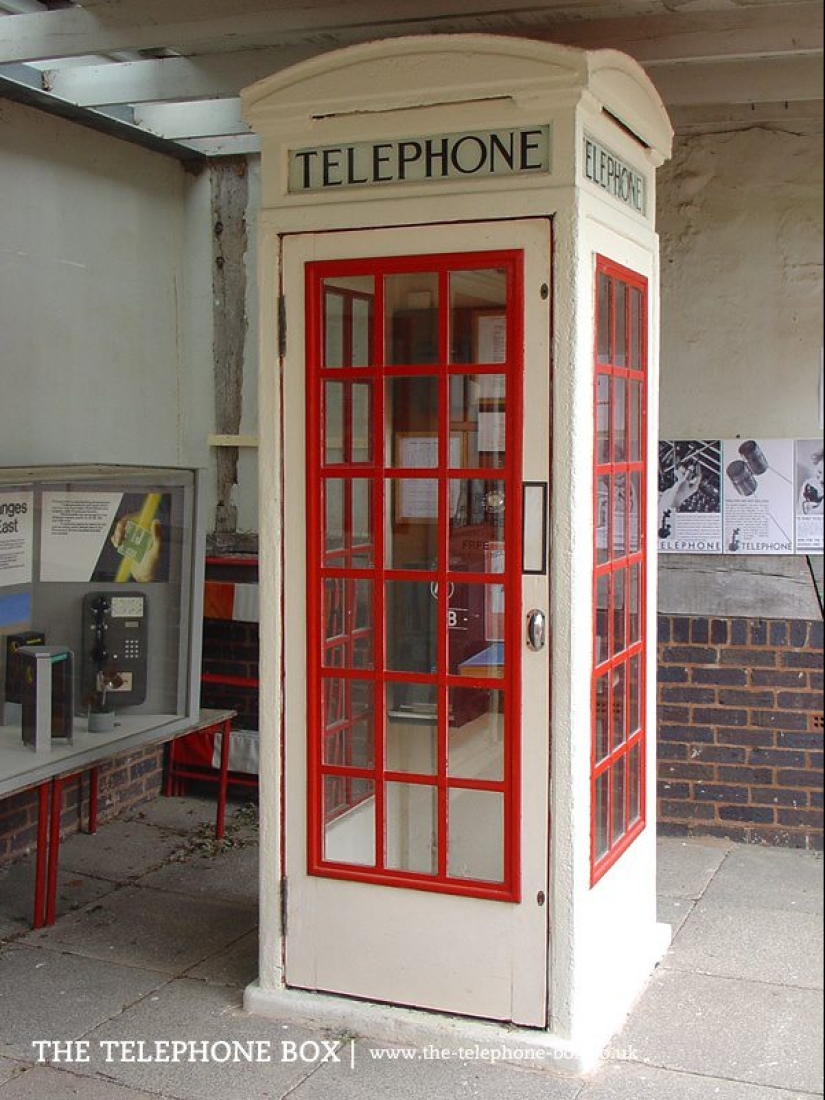 Telephone kiosk K3
Telephone kiosk K3
Giles Gilbert Scott designed the K3 — like its predecessor the booth, but smaller, more simplified style and a more economical to manufacture. Design a telephone kiosk continued to improve, but its structure has remained the same: a rectangular box with a domed roof.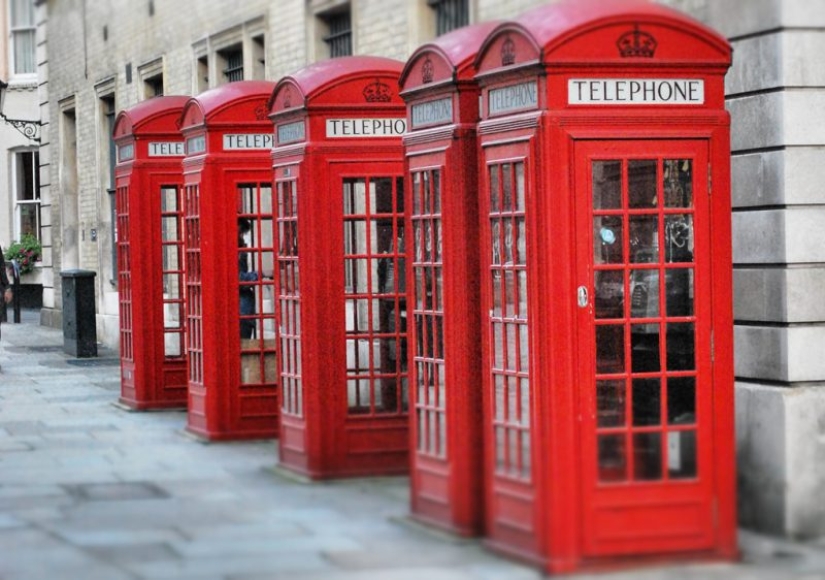 Many years later, the red telephone box became a symbol of Britain. Despite the time of advanced technology and the era of mobile phones, boxes continue to be on guard of national traditions of the British. Time passes, generations change, but the red kiosks warmly beckoning passersby to come inside and hear on the other end of the phone's native voice.
Many years later, the red telephone box became a symbol of Britain. Despite the time of advanced technology and the era of mobile phones, boxes continue to be on guard of national traditions of the British. Time passes, generations change, but the red kiosks warmly beckoning passersby to come inside and hear on the other end of the phone's native voice.
Have you ever called red British phone booth?
Keywords: Architect | UK | Design | Copy | London | Grave | Tombstone | A symbol
Post News ArticleRecent articles

It's sad to say, but we're all going to die. Death comes into the life of any person, and often unexpectedly. However, there are ...

A wrinkled forehead, a toothless mouth, frowning brows or, conversely, a happy smile and the absence of hair or their rare ...
Related articles

A lot of young singers and biggest stars drew inspiration from the source of creative ideas singer and model grace Jones and ...

Pillowcases thieves, burglars shops and petty crooks juvenile offenders, which a hundred years ago in the UK flogged with rods, ...

Brilliant designers live among us! But not all of them create skyscrapers or collections of high-fashion dresses, photos of which ...

A young photographer named Izabella Bedő decided to share simple but very valuable tips on how to take stunning photos of, for ...